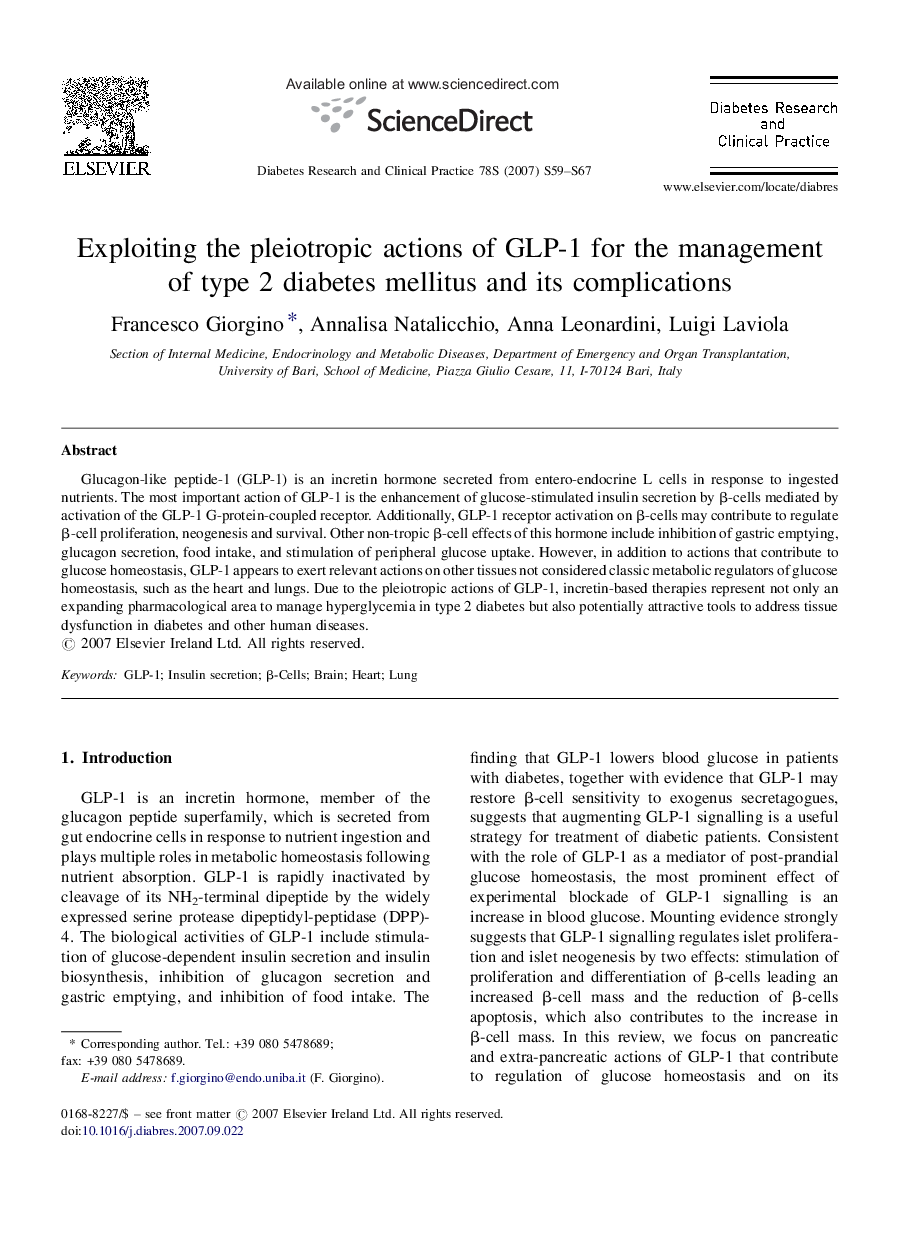| Article ID | Journal | Published Year | Pages | File Type |
|---|---|---|---|---|
| 2798714 | Diabetes Research and Clinical Practice | 2007 | 9 Pages |
Abstract
Glucagon-like peptide-1 (GLP-1) is an incretin hormone secreted from entero-endocrine L cells in response to ingested nutrients. The most important action of GLP-1 is the enhancement of glucose-stimulated insulin secretion by β-cells mediated by activation of the GLP-1 G-protein-coupled receptor. Additionally, GLP-1 receptor activation on β-cells may contribute to regulate β-cell proliferation, neogenesis and survival. Other non-tropic β-cell effects of this hormone include inhibition of gastric emptying, glucagon secretion, food intake, and stimulation of peripheral glucose uptake. However, in addition to actions that contribute to glucose homeostasis, GLP-1 appears to exert relevant actions on other tissues not considered classic metabolic regulators of glucose homeostasis, such as the heart and lungs. Due to the pleiotropic actions of GLP-1, incretin-based therapies represent not only an expanding pharmacological area to manage hyperglycemia in type 2 diabetes but also potentially attractive tools to address tissue dysfunction in diabetes and other human diseases.
Related Topics
Life Sciences
Biochemistry, Genetics and Molecular Biology
Endocrinology
Authors
Francesco Giorgino, Annalisa Natalicchio, Anna Leonardini, Luigi Laviola,
